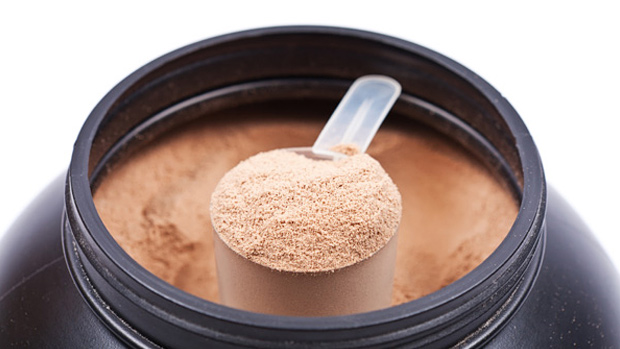Years ago, people, usually well-meaning mothers, would tell you not to go swimming after a big meal because you'd cramp up and sink to the bottom of the lake like a moribund turtle.
Medical experts dispensed weird advice, too. Back in the late 1800's, John Harvey Kellogg, superintendent of the Battle Creek Sanitarium, advised a litany of weird nutritional practices, including the eating of bland food to quell the sex drive. He invented Kellogg's Corn Flakes to do just that.
The list of bonehead advice or beliefs is infinitely long and continues to grow every day. Sadly, though, most of these beliefs live on, like some Frankenfood that's been inundated with immortalizing preservatives.
Here, though, are a few things people say that, while not John Harvey Kellogg crazy, deserve to die anyway.
Just about any time you go on the internet to read your favorite newsfeed, you're introduced to a new super food, one that's high in antioxidants and that curbs inflammation. Most likely it also fights cancer.
While there are plenty of legitimate super foods that are significantly higher than others in certain nutrients and phyto-nutrients, every damn digestible part of a plant – any plant – is full of antioxidants! Similarly, any digestible part of a plant will invariably fight inflammation. And chances are that any plant "fights cancer" in some way, perhaps only by virtue of it containing antioxidants.
Go ahead, Google "potatoes, cancer," and you'll get a number of links to the tumor-fighting properties of potatoes (except fried potatoes, which supposedly cause cancer). Same with kumquats and cancer, or likely any fruit you can think of. Hell, it makes you wonder if chemotherapy should consist simply of an IV line of V8 vegetable juice, or simply smothering a tumor with a dollop of potato salad or some mashed rutabaga.
Since all plants are exposed to oxidative agents, they all possess elaborate antioxidant mechanisms, so let's all vow to stop saying that your favorite fruit or plant part is full of antioxidants. Otherwise, you sound like a moron.
Oh, I get it. You're nutritionally pious. You're the Saint Sebastian of Schmaltz. You don't want to introduce even a gram of fat to your whippet-like waistline, and you'll be damned if you'll allow any saturated fat to infiltrate your pristine pipes.
Look, a chicken breast is lean, skin or no skin, and leaving the skin on only adds about 50 calories, depending on the size of the bird. What's more, about 55% of the fat in the skin is monosaturated. You know, like olive oil. The rest of it, about 2.5 to 3.0 grams, is indeed saturated. Get over it.
So don't break out in hives when someone serves you chicken with the skin on. Besides, if your date sees you pathetically using your knife as a dermatome to flay your fowl, she'll rightfully assume that as far as a lover, you won't even ruffle the sheets and she'll feign tuberculosis so she can catch an Uber ride home.

Okay, maybe sea salt contains a few more nano particles of certain elements like calcium, iron, copper, and a few others, but they're trace elements. For instance, a teaspoon of sea salt contains around .2 mg of iron. That's fine, but your daily value of iron, if you're a man, is about 8 mg. If you're a woman, it's about 18 mg.
Either way, if you're depending on sea salt to fulfill your daily requirements for certain minerals, you're not a human – you're a flounder.
It's true that table salt is heavily processed and has virtually no trace elements, but it usually has what sea salt is missing, and that's iodine. The Morton Salt Company started adding the chemical to their table salt back in 1924 because too many people who lived far away from the ocean weren't getting any seafood and hence little to no iodine. Huge thyroid nodules and goiters became commonplace and a significant portion of America looked like a traveling circus freak show.
Kids in the 4H club would take their parents and grandparents to the state fair to show off their prodigious goiters and hopefully take home the first-place ribbon. Okay maybe not, but it was bad. And because of all the attention sea salt has been getting, iodine deficiencies and thyroid problems (e.g., a malfunctioning metabolism, nodules, and even goiters) are again on the rise.
So put away your pink Himalayan sea salt. You look like a moron.
I heard this one again just the other day about rabbit meat, from a trainer no less. And I hear different versions of it all the time. Venison is high in protein. Ostrich is high in protein. Chihuahuas are high in protein. Of course they are, they're all meat!
If you were to gourmand your way through the classes in kingdom animalia, whether they're fish, birds, crustaceans, mammals, marsupials, etc., you'd find that they all, with the exception of sponges and guys that work the Apple "genius" desk, have muscle tissue, and muscle tissue is made of protein.
Singling out any particular type of meat for its alleged high or higher protein content is ridiculous. Their protein-per-serving might vary slightly because of differing fat contents, but it's insignificant.

The only people who truly need to detox are those who breakfast on alcohol, benzodiazepines, opioids, cocaine, methamphetamines, ketamine, or bath salts, and perhaps those that use the swimmin' hole next to the factory that bleeds lead, mercury, hexavalent chromium, radionuclides, and arsenic.
Conversely, accidentally eating some non-organic beets doesn't require de-toxification or cleansing, especially through the use of some funky herbs that were grown under some artisanal granola maker's porch.
Consider that in 2009, ten companies that manufactured detox products couldn't name a single toxin that their products were supposed to target. That should tell you something, which is that morons make the world go round.
Besides, you already have an excellent "detox" system in place, courtesy of your liver, kidneys, lungs, and other organs. They do quite well in ridding your body of the byproducts of metabolism. Undertaking a special diet to Drano out your miserable intestines is stupid and will likely weaken your body, ironically leaving your organs unable to do their true detoxification work.
I've written about this before, but it needs to be repeated. Chemicals are the building blocks of the natural world. You yourself are nothing but chemicals. In fact, the current value of the chemicals in your body (compiled as basic elements), according to the Mayo Clinic Libraries, is about $4.50. That's $3.50 for the skin and about a buck for the rest of the carbon, calcium, phosphorous, sulfur, iron, etc.
Your grieving relatives could barely sell your chemical constituents for a big cup of plain coffee, speaking of which, has a ton of scary sounding chemicals:

In fact, if you were to break down almost any natural fruit or plant part into its chemical ingredients, you'd get a list that would be similarly ominous.
Advertisers tend to throw around words like "pure" and "simple" to describe "natural products," but they couldn't be more wrong. There's usually nothing simple about foods, but that isn't necessarily a bad thing, especially since nature herself can construct things that, according to food scientist James Kennedy, are "far more complicated and unpredictable than anything we can produce in labs."
So stop bad-mouthing the long list of ingredients in the foods you buy. Just because you can't pronounce it doesn't make it harmful or bad. If that were the case, you'd never want to put Sriracha sauce on your burrito, and who would want to live in that kind of bleak, gray world?
We need manmade chemicals and the difference between "natural" and "artificial" is often just a matter of perspective. After all, natural isn't always good for you and the manmade stuff isn't always dangerous.
Both corn syrup and table sugar are a 50/50 blend of glucose and fructose. "High fructose" corn syrup (HFCS), however, is, at its most extreme level of fructose-ness, a 55/45 percent blend of fructose and glucose.
That's five percent more fructose than regular corn syrup, cane sugar, or table sugar. That's what you're getting all agitated about? Put it this way: If you drink a 12-ounce Coke made with cane sugar and your Devil-may-care friend drinks one made with HFCS, you're getting about 20 grams of fructose while he's ingesting almost 22 grams of fructose. That's right, not even two lousy grams.
While the argument about the safety of fructose in general is also a bit murky, it's an argument for another day. But worrying about HFCS? It's like fearlessly traipsing across a tight wire that's 100 feet above a wind swept canyon and suddenly wetting your pants and showering the dry riverbed beneath you when forced to negotiate that same canyon on a 105-foot tight wire.





